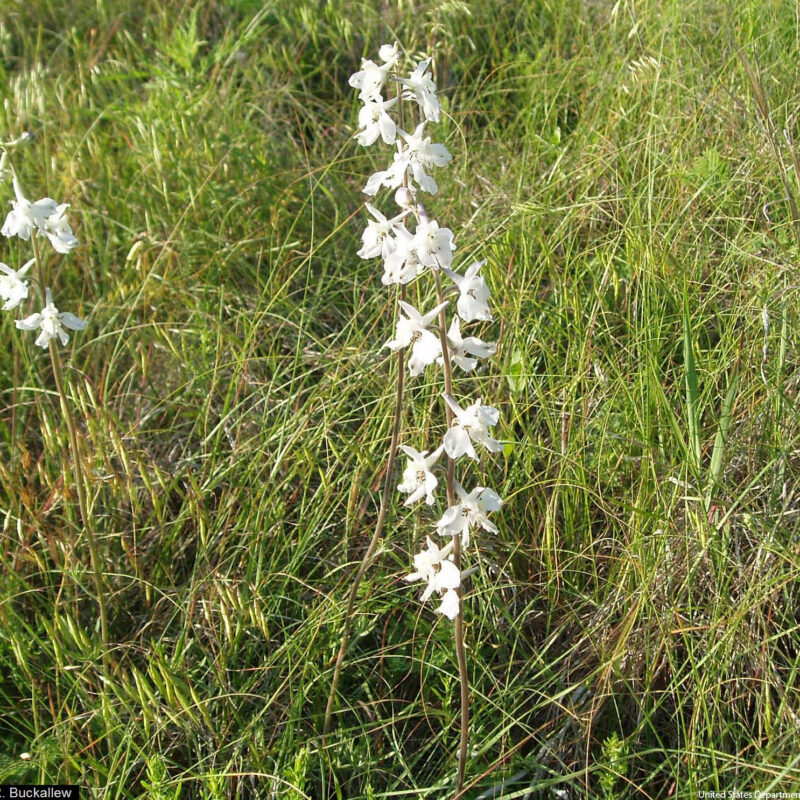Prairie LarkspurDelphinium virescens
a.k.a. Carolina Larkspur, Delphinium carolinianum
Prairie Larkspur thrives in sun and medium to dry soil. A good plant for rock gardens and prairie restorations. Toxic to mammals, but a favorite for bumblebees.
USDA symbol: DECA3
General Information
| Plant Type | Forb |
|---|---|
| Height | 2 to 4 feet |
| Light Exposure | Sun |
| Soil Moisture | Dry |
| Bloom Color | White |

Tolerances
| Flooding / Inundation Tolerance | Low |
|---|---|
| General Resilience | 5 |
| Salt Tolerance | Unknown |
Pollinator Value: High
| Bloom Months | June to August |
|---|---|
| Pollinator Benefit | Insect Pollinated, Provides Nectar |
Project Planning
| Project Type | Erosion Control, Restoration, Upland Buffer |
|---|---|
| Coefficient of Conservatism | 7 |
| Herbivore Sensitivity | Low |
| Lifespan | Perennial |
| Rate of Spread | Slow |
| Soil Stabilization | Shallow |
| Vegetative Reproduction | Clonal |
Range
| County | Anoka, Becker, Benton, Big Stone, Blue Earth, Brown, Cass, Chippewa, Chisago, Clay, Cottonwood, Crow Wing, Dakota, Douglas, Faribault, Goodhue, Hennepin, Hubbard, Isanti, Jackson, Kandiyohi, Lac qui Parle, Le Sueur, Lincoln, Lyon, Mahnomen, Martin, McLeod, Meeker, Mille Lacs, Morrison, Mower, Murray, Nicollet, Nobles, Norman, Olmsted, Otter Tail, Pipestone, Polk, Pope, Ramsey, Redwood, Renville, Rice, Rock, Scott, Sherburne, Stearns, Todd, Wabasha, Wadena, Waseca, Washington, Watonwan, Wilkin, Winona, Wright, Yellow Medicine |
|---|---|
| Ecoregion | Driftless Area, Lake Agassiz Plain, North Central Hardwood Forests, Northern Glaciated Plains, Northern Lakes and Forests, Western Cornbelt Plains |
| Approximate Eco Province | Eastern Broadleaf Forest, Laurentian Mixed Forest, Prairie Parkland, Tallgrass Aspen Parklands |
